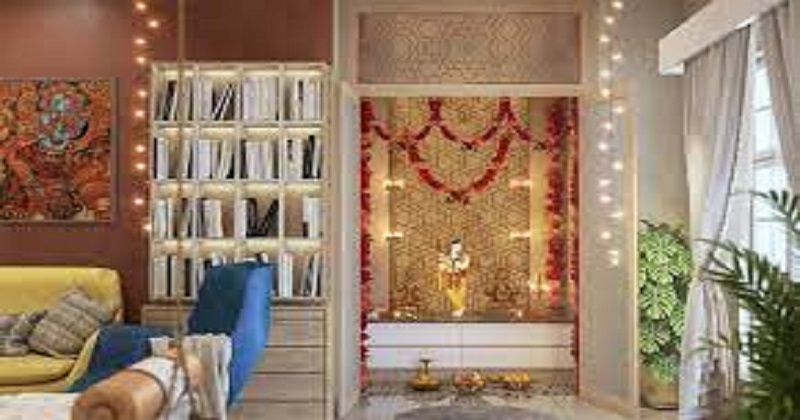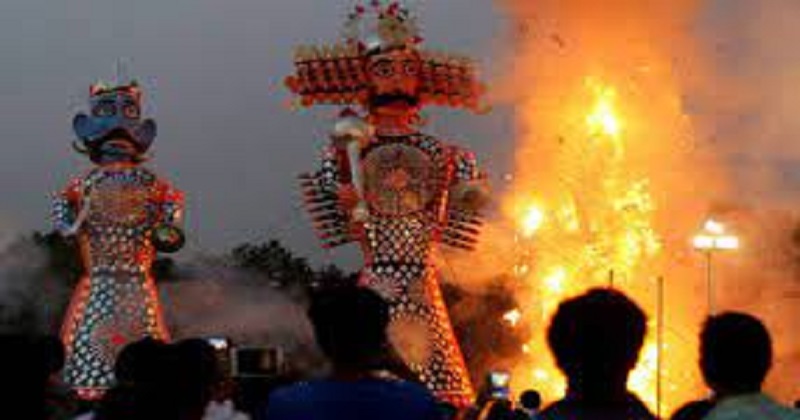
India celebrates Navratri with great enthusiasm. The festival lasts for nine nights. It is celebrated auspiciously for worshipping the feminine form of the power called ‘Shakti’. In India’s eastern and north-eastern states, Durga Puja is synonymous with Navratri, when the goddess Durga battles and defeats the buffalo demon Mahishasura to help restore Dharma. During the Navratri season, West Bengal celebrates the festival of Durga Puja in honour of Goddess Durga. The festival lasts for ten days, however, visitors can see the grand idols of Goddess Durga in the Pandals from the sixth to the ninth day. Flowers, clothes, jewelry, and sweets are placed around the idol.

It is important to decorate the Navratri festival very traditionally. Different religions in India celebrate it differently, but its essence remains the same. India’s Bengalis celebrate Navratri as Durga Puja, and one of the most beautiful ways to view this festival is in Kolkata. While in South India, Navratri golu is celebrated with a doll display called Bommai Golu (Kolu in Tamil), Bommala Koluvu (Kolu in Telugu) and Bombe Habba (Kannada). Navratri decorations adorn every home during the festival time. Check out these Navratri decor tips!
01. Clean the Cluttered Space

You should begin by cleaning your house for the holiday season. Once you’ve chosen the perfect backdrop for each of your rooms, it is important to make sure the space is clutter-free. This is true especially for the Pooja room. The more natural the better!
02. Decorate Home with Flowers, Garlands & Wreaths

Enjoy your Navratri festival this season by decorating your entrance doors and windows with marigold flower wreaths (‘Genda ka fool’) and other autumn flowers. This marks the beginning of the ‘sharad navratra’. Moreover, the fragrance of these flowers, especially marigold, would delight the entire house!
03. Earthen Pot

As part of the Navratri decor, earthen pots can be used to decorate the home (Puja room). Gujarati tradition dictates that the house be decorated with garbo. It’s an earthen pot filled with a diya candle, lace, mirrors, and flowers, and decorated beautifully with little mirrors.
04. Interior Colours!

Make sure that your interiors are ready for the Navratri festival. We Indians love colours, so your home interior should reflect this love. You can paint your home with earthy greens, reds, yellows & oranges, which are the true colors of India. If your budget allows, you can also get a wall makeover. You can easily replace the furnishings & decorative items. Couches and pillows are among the most popular interior decor items. With a few ethnic-designed cushions, you can spice up your sitting area for Navratri. The market offers a wide range of cushions, from mirror work to colorful embroidery.
05. Rangoli or Alpana

Traditionally, rangolis and alpanas are made. Hindu festivals are incomplete without rangolis. Rangoli designs are elaborately crafted inside the house as well as on the portico. Flowers and leaves can also be used to create rangolis. The new ready-to-stick rangolis are also available, such as Kundan Rangoli.
06. Potpourri of Fragnance

Decorative bowls or jars can be filled with potpourri. A bowl of dried petals and spices is used to scent a room. The fragrance of this flower does not only soothe the eyes of the visitors but also sets the tone for these pristine Pooja days!
07. Diyas, Candles & Tea Lights

Without Diyas, Indian festivals would be incomplete. The decorative Diyas can be displayed in the Living Room as well as the Pooja Room to enhance your Pooja activities. You can also add a touch of creativity to your terracotta diyas by painting or decorating them with small craft beauties to give them a personalized touch. The earthy diyas are made from terracotta and give the deity a soft light. Festival decorations can include burlap lanterns, mason jars, decorative lamps series of lights. Strings of LEDs & fairy lights can also be strung around the deity. You can use brass lamps and tea-lights in your pooja room to add some ethnicity. You can also place floating candles in a traditional vessel spread with flower petals to add flair to your pooja room.
08. Decorative Figurines & Antiques

For those who are real decor enthusiasts, there are several antique shops in the area that sell figurines of different gods set in their own settings. You would steal the best show in town once you place these decorative items with ornamental dolls!
09. Decorative Bells and Hangings

For decorating your home or dividing rooms, you can purchase a few traditional room dividers & bells. It can be used as a room divider, or you can simply hang it outside your pooja room or pooja unit.
10. Hanging ‘Toran’

Keeping a ‘Toran’ in your pooja room & at the entrance door is also considered auspicious during the Navratri festival. There are many different types of torans in the market, with embroidery & mirror work. You can also find pearl beaded torans as an alternative, which are a very popular type of hangings today. You can also hang torans made of mango /coconut leaves.
11. Ornamental Idols – ‘Golu’

Golu is made during Navratri in South India. The tradition states that Goddess Durga meditates for nine consecutive nights before killing Mahishasura. There are nine steps depicting these nine nights, made out of wooden planks. The steps are decorated with idols of many gods and goddesses and a wooden image of the goddess Durga.
This unique piece of art illustrates scenes from ancient Indian stories such as the Ramayana, the Puranas, and the Dashavataram, which have been passed down from generation to generation. It is the time of the year when you revisit the valuable lessons you learned from old stories. In a way, the steps could also be seen as a ladder of evolution on which we are all traveling.
Celebrating ‘Dussehra’

The tenth day is celebrated with a festival called Dussehra, on which you can hang garlands of yellow flowers (marigolds) & mango tree leaves around your home, temple, and vehicle. In India, Dusshera marks the end of Navratri and is celebrated with grandeur & energy. People celebrate Dusshera to the fullest.
To conclude, you can turn your home into a festive setting simply by choosing one of the above-mentioned Navratri decorating ideas. In addition to creating a stunning look for your home, Navaratri decorations will also bring positive energy into it. You should always try to keep it simple, clear, and natural. Therefore, if you haven’t begun yet or don’t know where to begin, then these Navratri decoration ideas will definitely help.

Post Your Comments